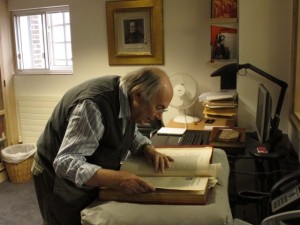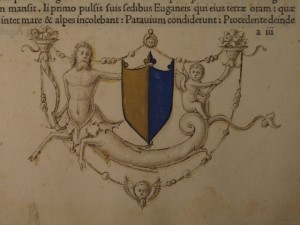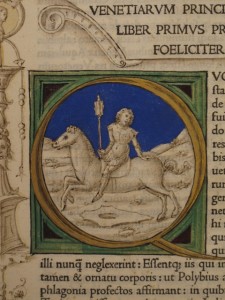![Inc.Broadsides.2[4421] - stamp from Augsburg - reduced](https://inc-blog.lib.cam.ac.uk/wp-content/uploads/2013/10/Inc.Broadsides.24421-stamp-from-Augsburg-reduced1.jpg)
One of the library broadsides incunabula bears a stamp from an unidentified library in Augsburg.
Thanks to the comments by Dr Klaus Graf and Verena Godde, my tentative reading of the stamp inscription “<Bibliothe>k des Kathol. Studie<rn****> in Augsburg” has been corrected in “Bibliothek des Katholischen Studienfonds in Augsburg”.
![Inc.Broadsides.2[4421]- reduced](https://inc-blog.lib.cam.ac.uk/wp-content/uploads/2013/10/Inc.Broadsides.24421-reduced.jpg)
The stamp is found in the lower margin of the broadside edition of the Zeichen der falschen Gulden attributed to the workshop of Anton Sorg in Augsburg around 1482 [ISTC iz00019000; Oates (MS. addition) 921.5], now Inc.Broadsides.2[4421]. The text is a warning against false coins coming from the Netherlands and it is illustrated with ten woodcut images of the coins to help with their identification.
The stamp proves that the sheet remained in Augsburg at least until the 19th century. It was acquired by the library from Erasmus Antiquariaat, Amsterdam (Cat. 213A / 15193) in October 1958.

Sir Quentin examining the Sabellicus.
The Incunabula Cataloguing Project Team was delighted yesterday to welcome the renowned illustrator and author Sir Quentin Blake, accompanied by art education consultant Ghislaine Kenyon, on a visit to the Library.
In 2014, CUL proposes to publish an illustrated monograph containing a collection of 60 short articles penned by invited experts, discussing items from the incunabula collections. The authors have been selected to represent as wide a demographic as possible, with artists, poets, scientists and medics alongside incunabulists and typographers.

The arms of the Cornaro family.
Sir Quentin has very kindly agreed to contribute an article on one of our most remarkable decorated books, and visited yesterday to peruse it.
SSS.2.3 is a beautiful crisp copy of the Venice edition of Sabellicus’s Decades rerum Venetarum, printed by Andreas Torresanus, de Asula, 21 May 1487 (ISTC is00005000).

Initial on a3 recto
The CUL copy was clearly intended for presentation, and aimed at a patron of some standing. Leaf a3 recto is richly decorated with the arms of the Cornaro, one of Venice’s patrician families, held aloft by a slim triton and winged putto. There are a further thirty-five historiated faceted initials, mostly drawn in pen and set against a coloured background, depicting architectural motifs, figures and animals. These superb initials have been attributed by Lilian Armstrong to the Pico Master.
Sir Quentin spent a happy couple of hours examining the book with Laura Nuvoloni, the Project Cataloguer, and we eagerly await his submission.
![Inc.0.B.3.53[1546], upper board - Elephant tool](https://inc-blog.lib.cam.ac.uk/wp-content/uploads/2013/04/Elephant-tool4.png)
This small but intriguing tool is found on the beautiful early Renaissance bindings of four of our incunabula. It shows a four-legged animal with a long protruding nose carrying a square basket on its back, which is covered with a tasselled rug, and flying a flag bearing a cross. The image immediately brings to the mind representations of war elephants carrying warriors in their howdah, and it seems to me that this little tool also represents an elephant. Continue reading 'An Elephant in the Bindings: A Rare Appearance ?'»
The discovery of the remains of Richard III in a car park in Leicester prompted me to return to an annotation in a volume discovered and described briefly by my colleague Laura Nuvoloni in 2011. The book is a copy of Bartolus de Saxoferrato, Super secunda parte Digesti novi, printed in Venice by Vindelinus de Spira in 1473, Inc.1.B.3.1b[1341]. An early inscription demonstrates that it was once in the possession of Thomas Rotherham, Archbishop of York and Chancellor of England, and an annotation in it seems to refer to the events of June 1483, when Richard III seized power following the unexpected death of Edward IV. Continue reading 'Richard, Rotherham and the King’s Half-Brother'»
![Inc.Broadsides.2[4421] - stamp from Augsburg - reduced](https://inc-blog.lib.cam.ac.uk/wp-content/uploads/2013/10/Inc.Broadsides.24421-stamp-from-Augsburg-reduced1.jpg)
![Inc.Broadsides.2[4421]- reduced](https://inc-blog.lib.cam.ac.uk/wp-content/uploads/2013/10/Inc.Broadsides.24421-reduced.jpg)



![Inc.0.B.3.53[1546], upper board - Elephant tool](https://inc-blog.lib.cam.ac.uk/wp-content/uploads/2013/04/Elephant-tool4.png)